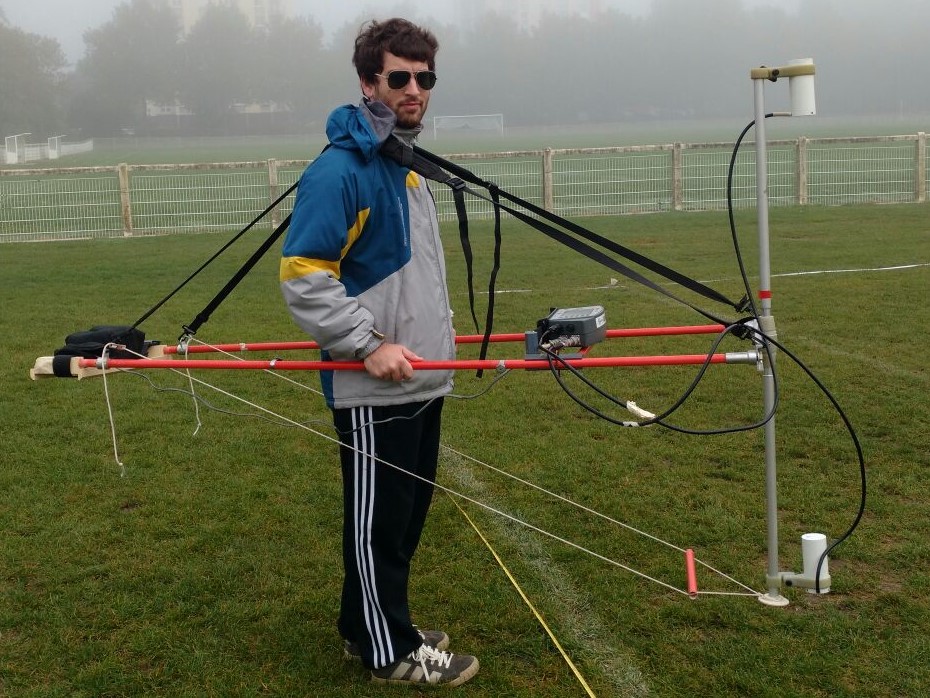
Research Fellow: Alejandro Fernandez
hosted by University of Lausanne
Supervisors
Niklas Linde – UNIL
Tanguy Le Borgne – CNRS
Yves Meheust – CNRS
Marco Dentz – CSIC
Secondments
University of Rennes 1 – 4 months (2018, 2019)
CSIC – 4 months (2019, 2020)
Research objectives
The first objective of this project is to establish direct links between spreading and mixing mechanisms at the pore-scale, and bulk physical properties in porous media, with primary focus on electrical conductivity. The second objective is to subsequently upscale the results to the resolution of geophysical tomograms in order to infer statistics about mixing-related quantities from geophysical tomograms.
Project description

Field-scale tracer tests monitored with geophysics (e.g., Singha and Gorelick, 2005) have shown that the solute mass inferred from time-lapse Electrical Resistivity Tomography (ERT) data is systematically underestimated compared to injected tracer mass. A recent laboratory study (Jougnot et al., 2019) suggests that pore-scale heterogeneities in solute tracer distributions, caused by spreading and mixing, lead to strong variations in effective bulk electrical conductivity.
Such heterogeneities of the saline tracer distribution are currently neither accounted for in the inversion of field data nor in the interpretation of inversion results that provide smeared-out representations of electrical conductivity variations. Relatively new stochastic models describing spreading and mixing (Le Borgne et al., 2015) have proven consistent with hydrogeological observations, providing a possible path to infer statistics of small-scale tracer heterogeneity from ERT data that can subsequently be used to characterize mixing processes at the field-scale.
Tasks & Methodology
- Milifluidic experiments combined with geophysical monitoring and interpretation techniques.
- Development of appropriate theoretical modeling tools.
- Test the upscaling method from field-based time-lapse ERT data at the Argentona site, Spain.
Data & Datasets
Access to data on Geo-electrically monitored milli-fluidic experiment
Dissemination & communication
(If you encounter issues to open the PDF documents using Chrome : please follow the Google advice : Chrome Help or use Firefox)
Poster for the 4th Cargèse Summer School 2018: “Millifluidic tracer experiments to investigate the signature of saline diffusion on effective electrical conductivity“
References
Jougnot, D., J. Jimenez-Mafünez, R. Legendre, T. Le Borgne, Y. Meheust, and N. Linde (2018). Impact of small-scale saline tracer heterogeneity on electrical resistivity monitoring under saturated and partially saturated conditions: Insights from geoelectrical millifluidic experiments. Advances in Water Resources.
Singha, K. and S.M. Gorelick (2005). Saline tracer visualized with three-dimensional electrical resistivity tomography: Field-scale spatial moment analysis. Water Resources Research 4I (5), W05023.
Le Borgne, T., M.Dentz and E. Villermaux (2015). The lamellar description of mixing in porous media. Journal of Fluid Mechanics 770, 458-498.
